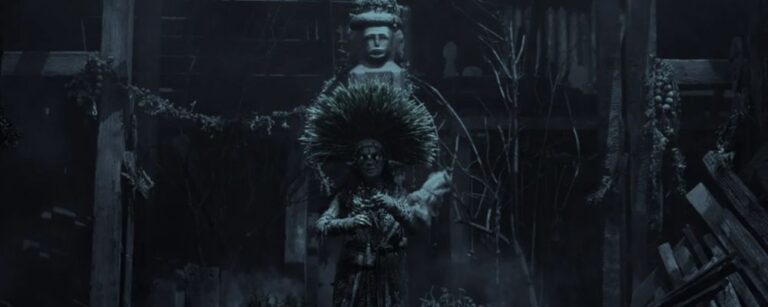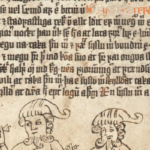Curses have a long and colorful history. Some of the oldest examples of writing from ancient Egypt and Greece are curses written on papyri or clay tablets for someone who wanted revenge on an enemy. I say “for someone” since literacy was not widespread in the ancient world. This is probably part of the reason that words, and especially written words, were thought to hold power.
The Vikings also believed that the spoken and written word held power and could not only describe destiny but also shape it [read more here]. Therefore, it may be no surprise that the practice of cursing was alive and well in the ancient world.
Read on for a brief insight into the nature of the Norse curse, starting with curses spoken by skalds and witches, moving on to written curses, runic stave curses, and the infamous Níðstang, an elaborate curse tradition still alive and well in modern Scandinavia.
How to Utter a Curse
Skalds and bards were greatly respected in the Viking world and their power to move people with their word was thought to have a semi-supernatural origin. Bragi, the Norse god of bards, may originally have been a famous human poet who was chosen to live among the gods for his talent [read more about Bragi here].
But according to the sagas, the words of skilled skalds not only had the ability to entertain but could also curse.
Curse of Thorleifr on Jarl Hakon
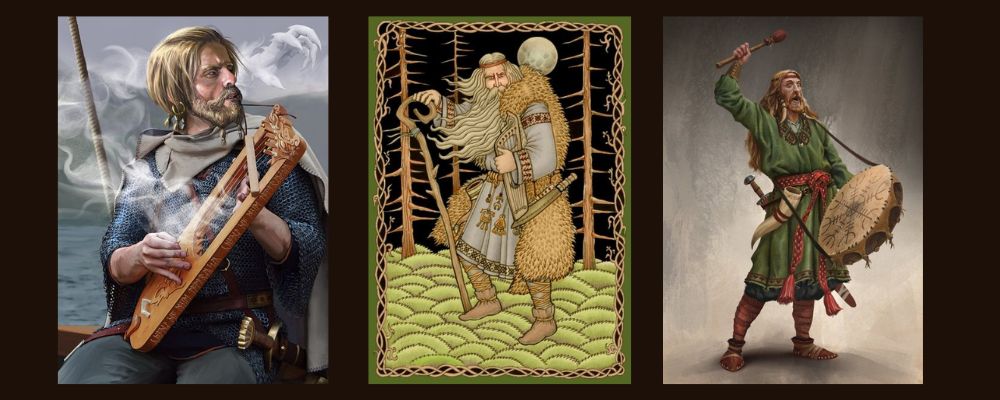
Take, for example, an Icelandic poem about a man called Thorleifr. The wealthy Icelandic man arrived in Norway, where he was treated badly by Jarl Hakon, who confiscated his wealth and had his men killed. Thorleifr escaped to Denmark where he learned the art of poetry and made a name for himself as a famous skald.
When he was ready, Thorleifr returned to Norway and the court of Hakon, where he was not recognized, but his new reputation preceded him. He offered to create a poem praising Hakon. But when he began to speak, he started insulting the Jarl and then cursing him. Initially, this caused the legs of the Jarl to itch uncontrollably. Then all the lights in the hall went out and the weaponry hanging on the walls came alive and started attacking Hakon’s men.
When the lights came back on, Hakon had lost half of his hair and half of his beard, which was considered highly shameful for a Viking warrior.
Curse of Thuridr on Grettir the Strong

In another saga, the Icelandic outlaw Grettir the Strong had avoided death in the wilderness and at the hands of his enemies more times than a person could count. But he eventually crossed the wrong person, a witch named Thuridr. When she was faced with the giant of a man she spoke a curse against him, and then carved the curse into a piece of wood, later painting the letters with her own blood. In this way, this tiny woman was able to defeat the seemingly unkillable warrior.
Curse of Busla on King Hringr

In yet another famous story, the witch Busla sneaks into the bedroom of King Hringr. Her intention is to curse him since he intends to kill her foster son Bosi and her own son Herraudr. This time her curse is purely verbal. First, she incapacitates him so that he cannot rise from his bed and escape her.
She then begins to incant the curse, threatening the king with all kinds of terrors. The Christian monk who records the story is reluctant to share the details of the curse because of the belief that the words still hold power, but he does share some details.
She promises that his chest will feel so much pain that it seems as if vipers are attacking his heart. His ears will no longer be able to hear, and his eyes will turn inside out. She says that his life will be at risk always from the natural elements, wild animals, and from supernatural creatures, and he will know no peace even in his own home. Of course, he will also lose his manly prowess in the bedroom.
Busla frees Hringr and does not complete the curse when he agrees not to kill the two young men, but rather send them on a dangerous mission and give their fate into their own hands.
Cure of Skirnir on Gerdr
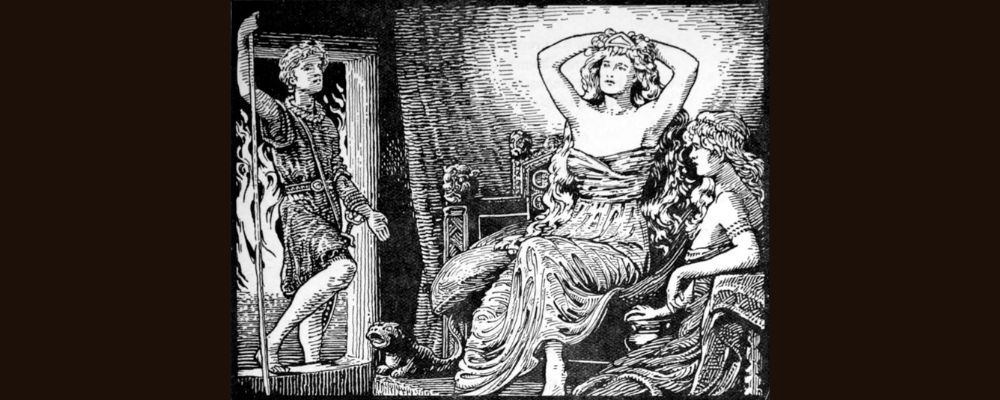
One of the most famous curses from the Viking world belongs to Norse mythology. When the god Freyr catches site of the beautiful giantess Gerdr from the throne of Odin, he immediately falls in love with her and becomes depressed by the fact that they can’t be together. Eventually, he sends his servant Skirnir to woo the giantess on his behalf.
The sources never specifically say what kind of being Skirnir is, whether is a type of god or a mortal servant of Freyr. These are known from elsewhere in Norse mythology. But when he reaches Gerdr, he first offers her great bounties if she agrees to marry Freyr. When she refuses, he threatens her with great violence. When she refuses again, he begins to mutter a curse, which he also writes in some way that is not clearly described.
Food would become disgusting to her and the best she will have to drink is goat urine. She will lose her looks and become horrible to look upon. She will be filled with lust, passion, and longing, but will never find a husband. This will lead to madness and uncontrollable pining. In the end, she will find herself gnawed on by the gods of hell as her soul is punished for all eternity.
Gerdr also agrees to Skirnir’s demands rather than face the consequences of this curse and agrees to marry Freyr. Skirnir reassures the giantess that he can uncarved the runes of the curse as easily as he carved them.
Spoken Curses
It is clear that the Vikings believed in the potency of spoken curses. In the medieval law codes of Iceland and Norway, composing the kinds of insulting and dangerous verses, like those described above, was outlawed.
But it is also clear that they believed that curses were more powerful when spoken and written words were combined.
Runestone Curses

Many people have heard of the curse that sealed the tomb of Tutankhamun and which promised death to anyone who disturbed the last resting place of the Egyptian king. Some believe that Howard Carter and his team suffered due to this curse. Similar curses set up to protect the resting places of the dead are known from the Viking world.
The Björketorp Runestone is located in Blekinge in Sweden. It is in a field of menhirs, which are stones that were used to make stone circles or mark burials. This runestone is significantly larger, 4.2 meters tall, and carries a terrible curse.
I, master of the runes, conceal here runes of power. Incessantly plagued by maleficence, and doomed to insidious death is he who breaks this monument.
A similar runestone was discovered at Stentoften, Blekinge, Sweden, and carries a similar curse.
I, master of the runes, conceal here nine bucks, nine stallions, Haþuwulfar gave fruitful year, Hariwulfar … … I, master of the runes, conceal here runes of power. Incessantly plagued by maleficence, doomed to insidious death is he who this breaks.
This inscription suggests that an animal sacrifice was part of the ritual that saw the placement of this runestone curse.
Both runestones are thought to date to the 7th century and were probably placed to protect the surrounding burial grounds.
A similar example was found in Saleby, Västra Götaland County, Sweden. This time a husband placed a curse on a stone that he erected for his dead wife.
Freysteinn made these monuments in memory of Þóra, his wife. She was … daughter, the best of her generation. May he who cuts to pieces … breaks … become a warlock and a maleficent woman …
Magical Runic Stave Curses
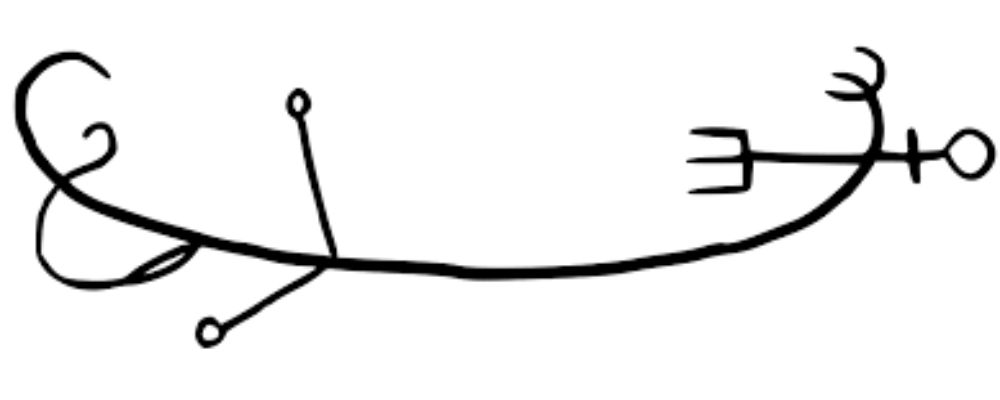
Considering that the Galdrastafir magical runic staves found in the Icelandic grimoires are inspired, in part, by earlier Viking rune magic, it is no surprise to see curse runes within the grimoires [learn more about the Galdrastafir here].
The Ottastafur runic stave is also called a fear rune. Scratch the symbol on an oak tablet and throw it at the feet of your enemy to make them afraid. To be fair, it would be pretty scary to know that the person in front of you is actively cursing your existence.
Dreprun, also known as the killing rune, is another curse rune. But it is more about killing someone’s livelihood than their person. Put this symbol on your enemy’s horse trail, and they will lose all their livestock.
Níðstang or Curse Pole
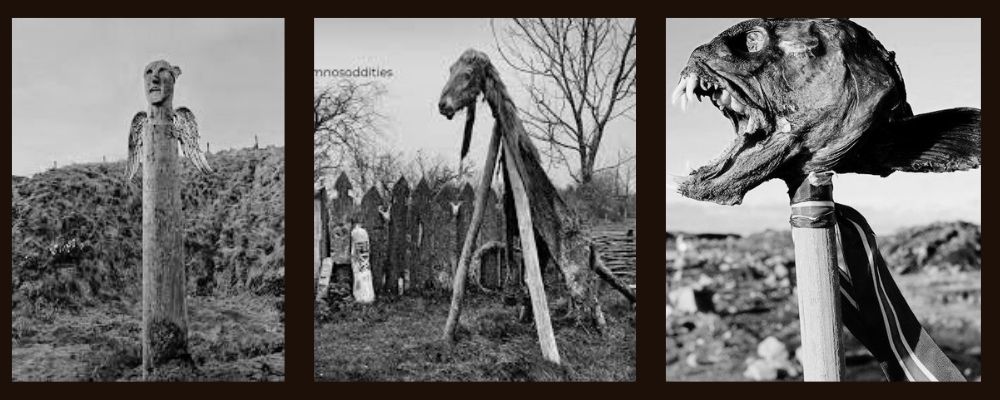
Perhaps the most infamous curse practice known from the Viking age is the Níðstang, also often referred to as the “Scorn Pole” or “Curse Pole”.
Vikings erected poles, usually made of wood inscribed with runes and other ritualistic symbols in a place where it would be visible to the person that they wanted to curse. In some cases, they would place the head of a recently slaughtered horse on top of the pole.
One example survives from Egil Saga, with Egil erecting such a pole to curse King Eric and Queen Gunnhilda. He used a pole made from hazel and made sure that the head of the horse was facing inland. Egil carved runes expressing the curse into the wood of the pole. He also extended his curse to the guardian spirits who dwelled in the land, stating that they would find no peace until Eric and Gunnhilda were driven out. The curse resulted in the pair being banished from their own kingdom.
In the Vatnsdæla Saga, when Finbogi doesn’t show up to a duel with Jokul, the latter raises a Níðstang against him. This time he carved a wooden head, which he placed on top of the pole that he inscribed with magical runes. As part of the ritual of placing the pole, he killed a mare, and then placed the pole into the mare’s chest, with the head facing the dwelling of Finbogi.
The ritual of the Níðstang has survived in some Scandinavian countries until the modern day. For example, an Icelandic farmer raised a pole with a calf’s head against a local man who had run over his puppy. The man proclaimed that he would not rest until the other man was outlawed or dead. In 2006, a Norwegian politician raised several poles topped by sheep heads to protect local elections.
Viking Curses
History is full of famous curses. There is the curse of the tomb of Tutankhamun, the curse of the Knights Templar, the Mal de Ojo curse of Mexico, and Dido’s curse on Troy. Curses were also relatively commonplace in the Viking world, where people believed that words, and especially the written word, had power.
Many sagas describe curses, but even more describe people wary of getting on the wrong side of bards and witches in order to avoid the possibility of being cursed.
